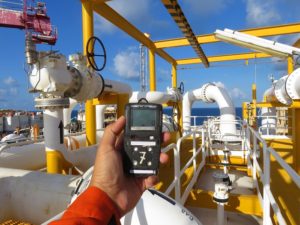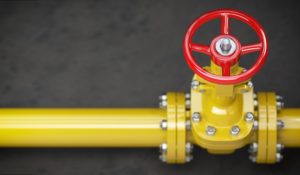In the modern commercial environment, portable gas detection monitors provide a critical layer of safety for both employees and the surrounding communities. The added protection of a properly deployed portable gas detector is especially important in industrial or manufacturing environments in which gas related hazards are present.

Gas detection can protect both employees and the surrounding population from dangers posed by a gas leak, whether that gas poses an inhalation or explosion hazard. In some circumstances, detectors are used to warn of the lack of a gas, such as in the case of low-oxygen level sensors that can make employees aware of a suffocation threat. Because of the range of dangers that are confronted by the presence of detection equipment, portable gas detectors are considered critical personal protection equipment, or PPE, in many industries. Keep reading to learn what you should know about portable gas detection.
Types of Gas Detection
Modern gas detection equipment comes in two primary types. Those types are portable gas detectors and fixed gas monitors. As is suggested by the name, portable gas detection equipment is meant to be carried on the person. Fixed gas detectors are mounted in a fixed location in areas near potentially dangerous gases so that they can sound an alarm if the presence of that gas is detected. Some industries rely on one type of the other. However, many rely on both types of gas detectors to get full spectrum protection.
Where Is a Portable Gas Detector Used?
Portable gas detectors are mobile since they are carried on or by personnel. They are used by anyone who is entering a confined space where there’s the potential for the presence of a dangerous gas or a lack of oxygen. The detector must be placed on the person so that the breathing zone is constantly monitored for safety. In most cases, that means the detector is affixed somewhere within a foot of the wearer’s nose and mouth.
Methods of Gas Detection

The way a portable gas detector measures the presence of gas in the environment largely depends on the type of gases that pose a potential threat. For example, electrochemical sensors and metal oxide semiconductor sensors are typically used to detect the presence of hazardous gases or gases that pose an inhalation threat. However, infrared sensors or catalytic sensors are used to detect the presence of combustible or explosive gases.
What Gases Does It Detect?
The gases detected by a portable gas detector can vary depending on the needs of the industry in which they’re used. For example, in a water treatment plant, gas detectors should be calibrated to detect the presence of chlorine gas, which is commonly used in treating water. In the petroleum industry, however, detectors may be oriented to pick up flammable gases, such as methane or natural gas. In areas where combustion takes place, such as an engine room, gas detectors would need to detect the presence of carbon monoxide while also detecting low oxygen levels. In other words, there are gas detectors suited to many different gases that could be a threat, and which one is needed is determined by the industry in which they’re used.
What Maintenance is Needed?
For gas detectors to reliably perform their critical task, they must be routinely maintained and calibrated. Since portable gas detectors may encounter many different operating environments, they may require frequent calibration to provide accurate and reliable readings. Calibration restores the sensor in the detector to a baseline level so that it doesn’t mistakenly fail to detect a gas or conversely, detect a gas that isn’t present. Equipment that isn’t calibrated can result in poor readings that create false confidence, thus putting lives in danger.
Portable gas detectors represent a critical piece of PPE that protects not only the lives of employees, but also those who live near industries in which hazardous gases may be used. Along with fixed gas monitors, portable gas detectors help to keep all parties safe in otherwise dangerous environments. To learn more about facts you should know about portable gas detection, contact DOD Technologies, Inc., at (815) 680-6086.






